Paint
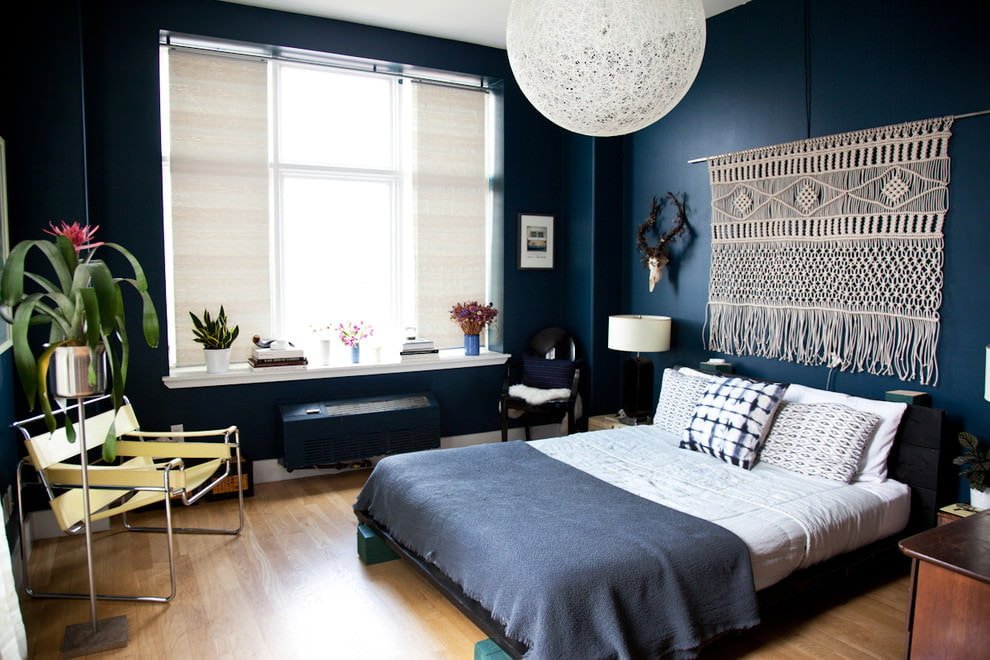
This is one of the most popular options for wall decoration: simple and laconic in appearance, but difficult to perform. Before getting a smooth, single-color surface, it is necessary to:
- level the walls with plaster or drywall;
- prime them;
- putty them;
- sand them until smooth;
- prime them again;
- paint them in 2–3 layers.
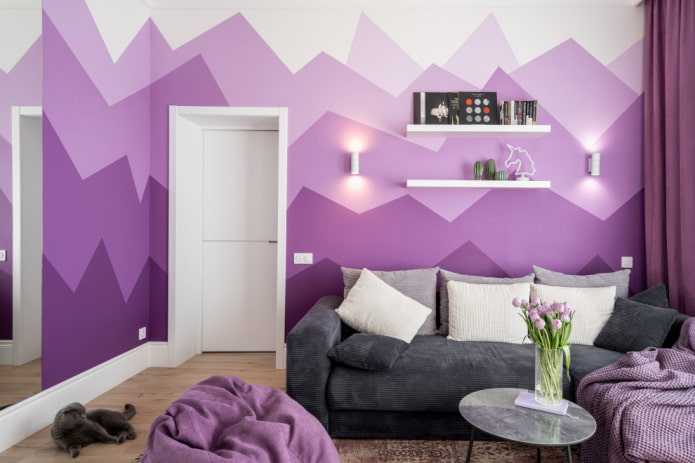
To make their task easier, apartment owners use paintable wallpaper or fiberglass, which partially hides defects. You don’t have to strive for an absolutely perfect surface – this gives you some freedom, pushing perfectionism into the background.
To add volume to a painted wall, you can complement it with decorative moldings.
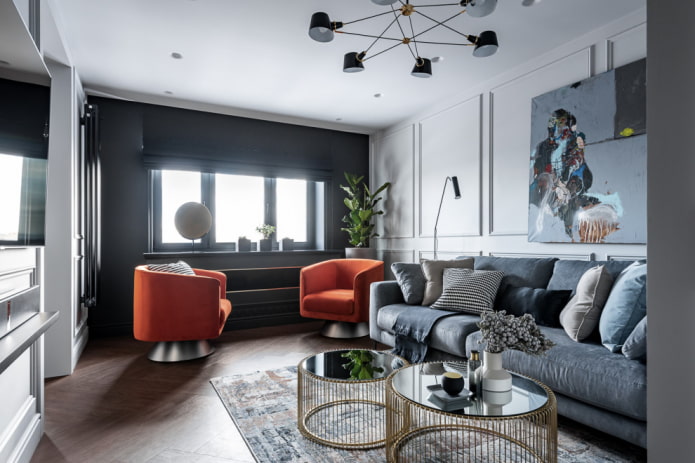
Wood or its imitation
The main advantage of wooden textures is that they add coziness to the room. It is difficult to find an apartment where wood or its analogues are not used. Engineered, barn or tongue-and-groove boards, lining and cuts can be used for wall cladding.
You can also find wooden mosaics on sale, consisting of square and rectangular pieces of wood.
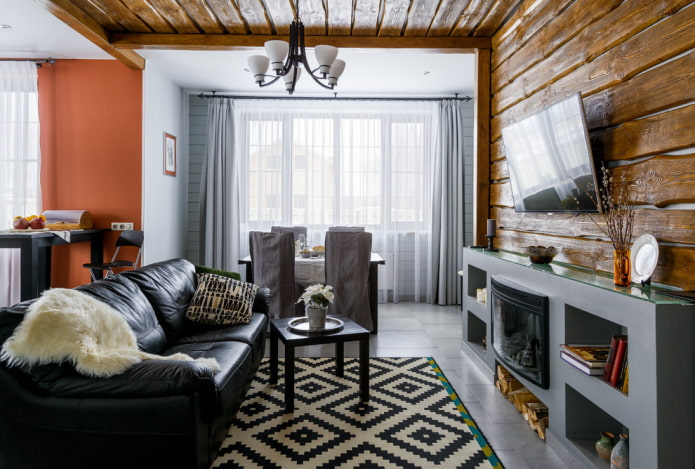
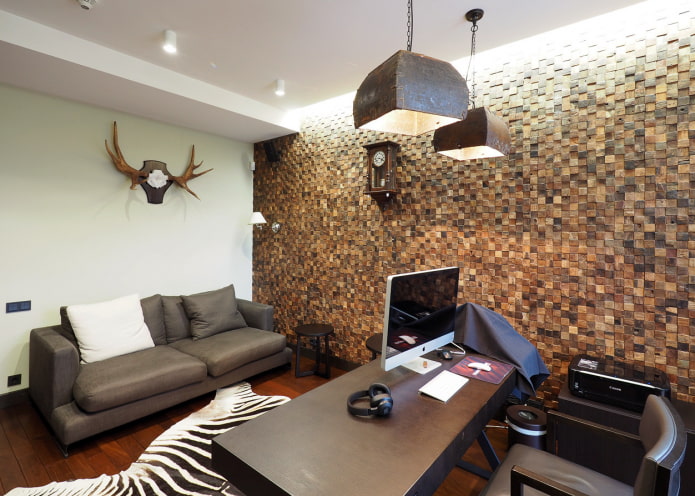
Natural wood is quite heavy, so laminate can be used as an alternative: it lowers the status of the finish, but wins in practicality and ease of installation.
There are also special thin lightweight solid wood boards with adhesive on the back: to fix the element, just remove the protective film and press it against the wall.
Wood is versatile, so it is widely used in traditional, modern and rustic styles.
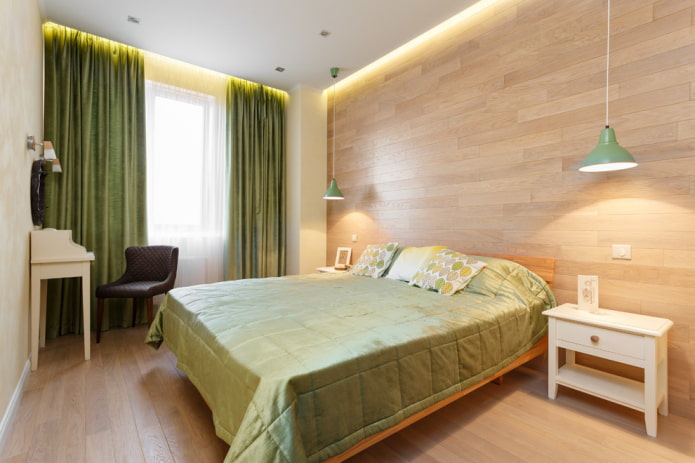
Fabric panels
Using panels upholstered in soft fabric, designers not only create magnificent interiors, but also improve the soundproofing of the room. This type of finishing is suitable for creating an accent wall, decorating a children’s room, bedroom and home theater.
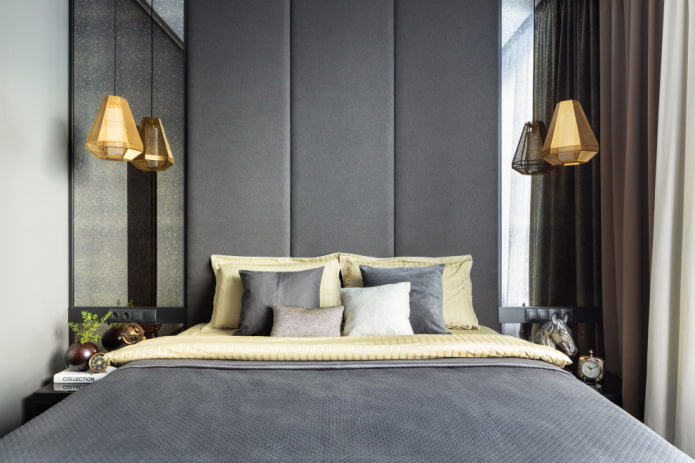
Fabric panels can be made by hand using:
- chipboard sheets or plywood;
- filler in the form of synthetic padding or thin foam rubber;
- upholstery fabric for furniture or leather, which is attached to the base with a stapler.
The denser the material, the more durable the products will be. The panels are fixed to a flat wall using liquid nails or dowels.
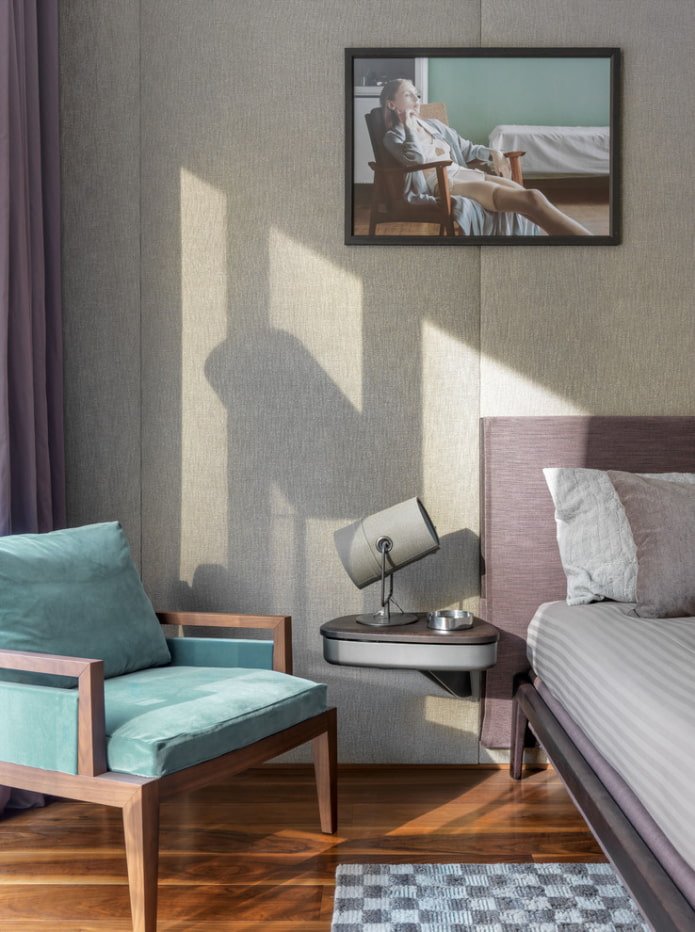
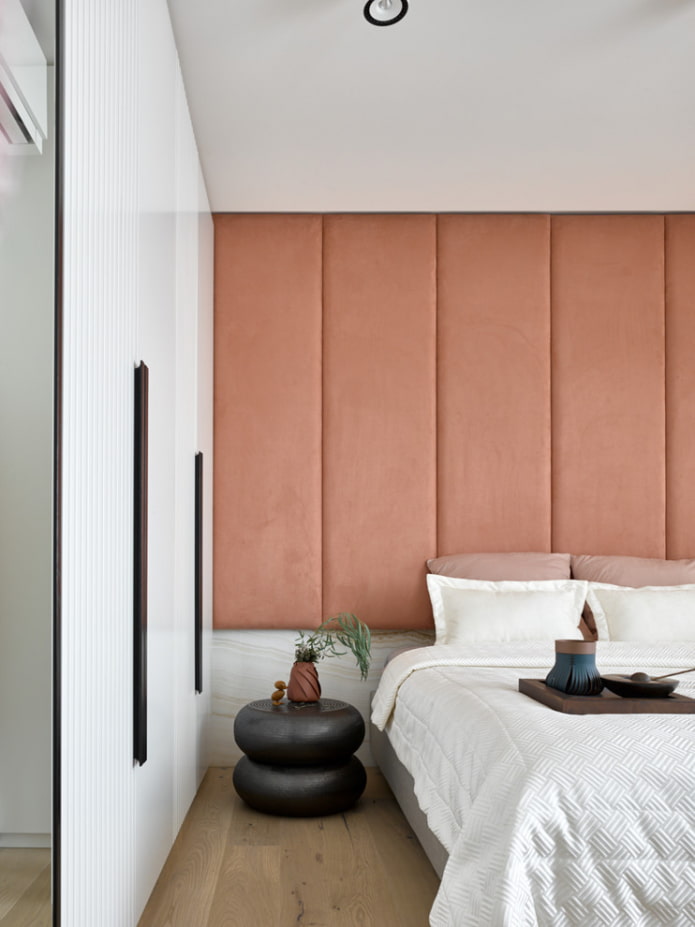
Brick or its analogue
Brickwork has long been a favorite finishing method in many modern apartments. The pronounced relief gives the atmosphere character, brutality and, oddly enough, homeliness.
To get authentic masonry, it is necessary to clean the brick partition from plaster, and then protect it with varnish or paint. But this method has several disadvantages: an abundance of dust during repairs, a decrease in soundproofing properties and inaccessibility for owners of apartments in panel houses.
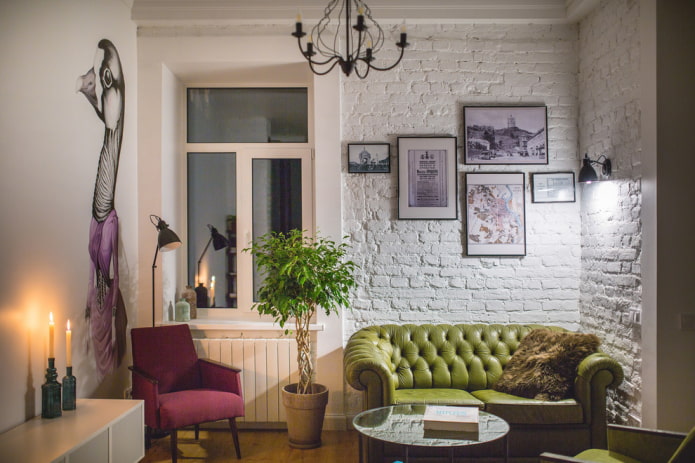
As an alternative, you can use gypsum tiles or create relief yourself using plaster or tile adhesive.
A more expensive type of finish is vintage masonry made from real old bricks. It has not only an unusual appearance, but also a noticeable weight, so when facing it requires the participation of professionals.
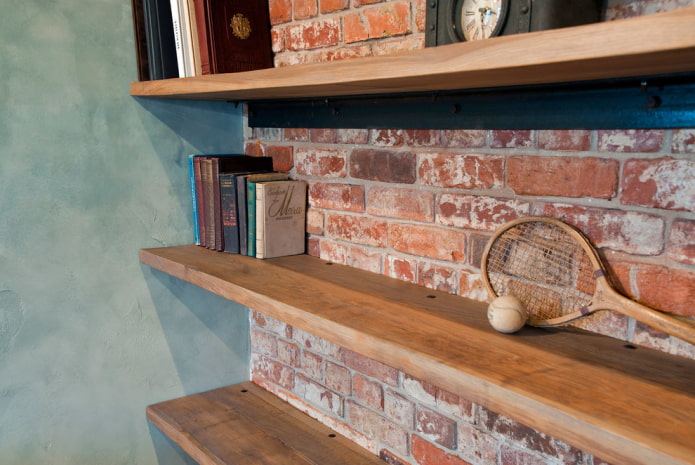
Decorative plaster
Another durable and stable material for wall finishing. The plaster is environmentally friendly, does not emit harmful substances and does not absorb odors. Can be applied without the help of specialists, suitable for all types of interiors.
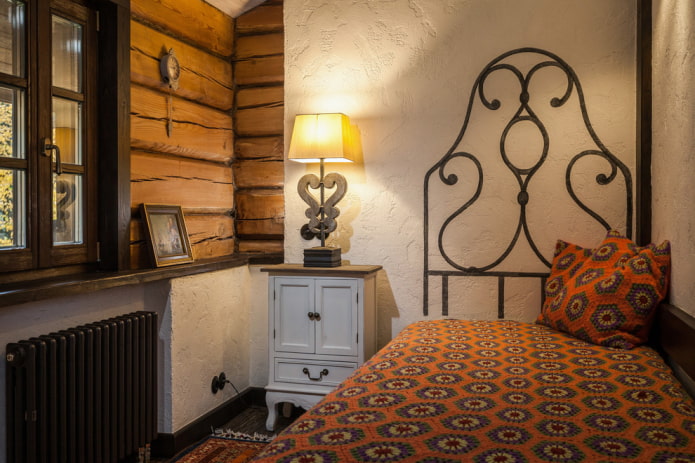
A variety of colors and types of finished surfaces (Venetian, bark beetle, imitation granite, concrete, “under the roller”, etc.) allows you to create a unique design. The main difference between decorative plaster and paint or wallpaper is the creation of a three-dimensional texture, thanks to which minor defects and irregularities are easily hidden.
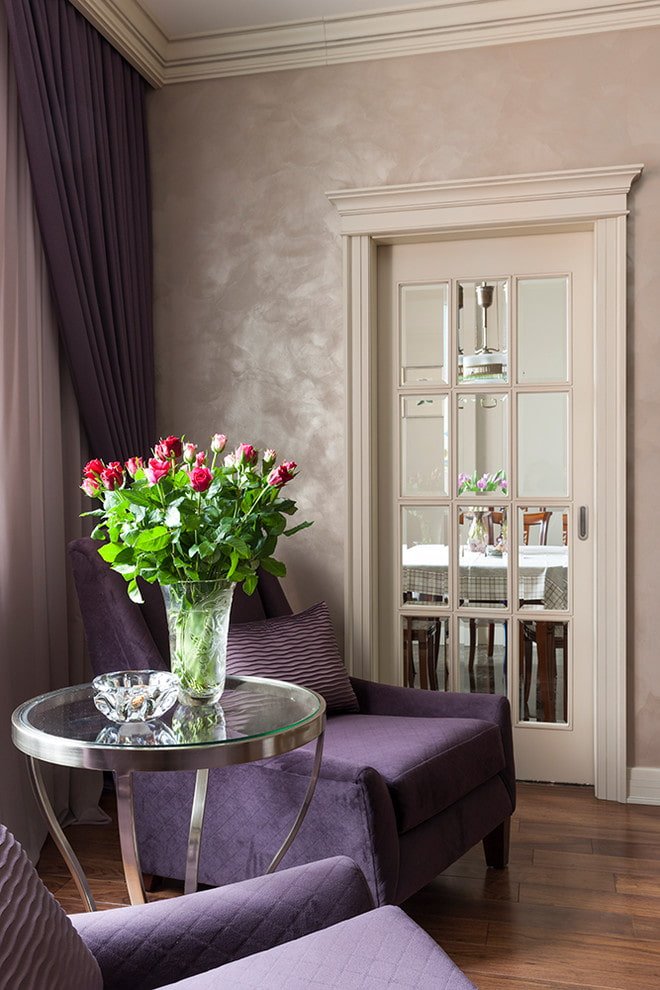

Gypsum 3D panels
This is an aesthetic and durable material for interior wall decoration in the form of square or rectangular slabs with a three-dimensional pattern. Despite the apparent fragility, they are a reliable way of decoration, allowing you to create seamless textured surfaces.
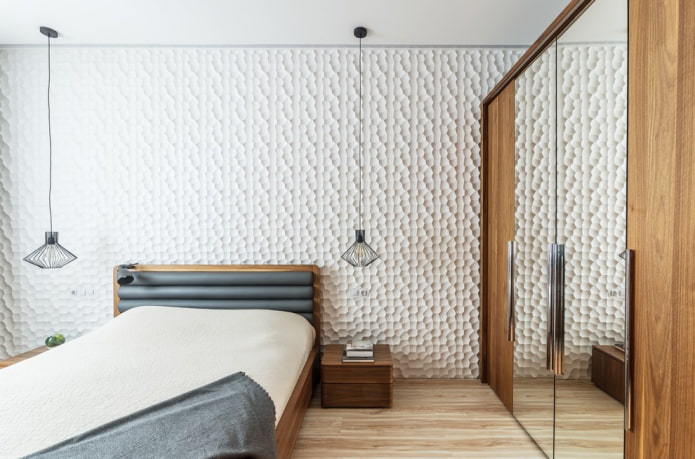
They are attached with mortar or using guides, and are puttied at the joints, turning into a single composition. They are well suited for zoning, decorating niches and creating accents.
To emphasize the 3D effect, wall panels are usually illuminated with wall or ceiling lamps.
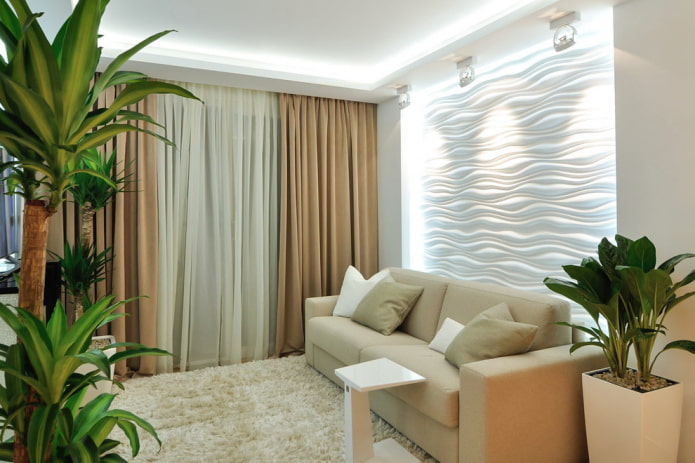
Fresco
You don’t have to be an artist to decorate a room with a fresco: there are many worthy imitations on sale. Unlike photo wallpaper, frescoes have no seams and are glued as a single piece.
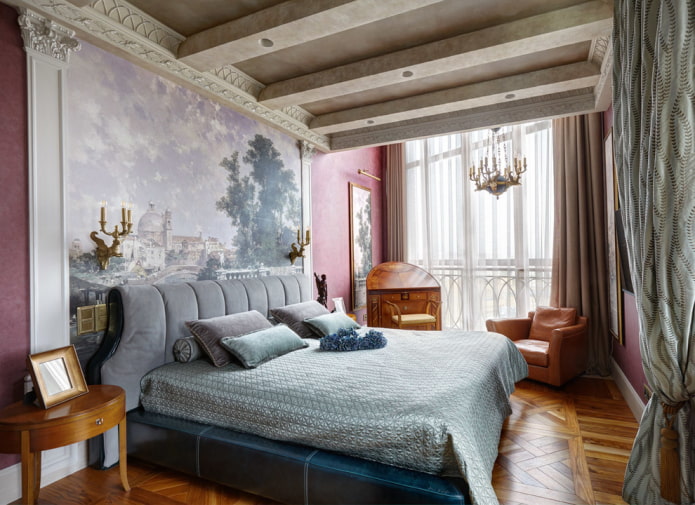
The design can be anything – some companies not only sell finished products, but also work to order. Frescoes help to visually expand or zone the space, they do not fade in the sun and do not crumble. The most popular products are frescoes on non-woven fabric and plaster.
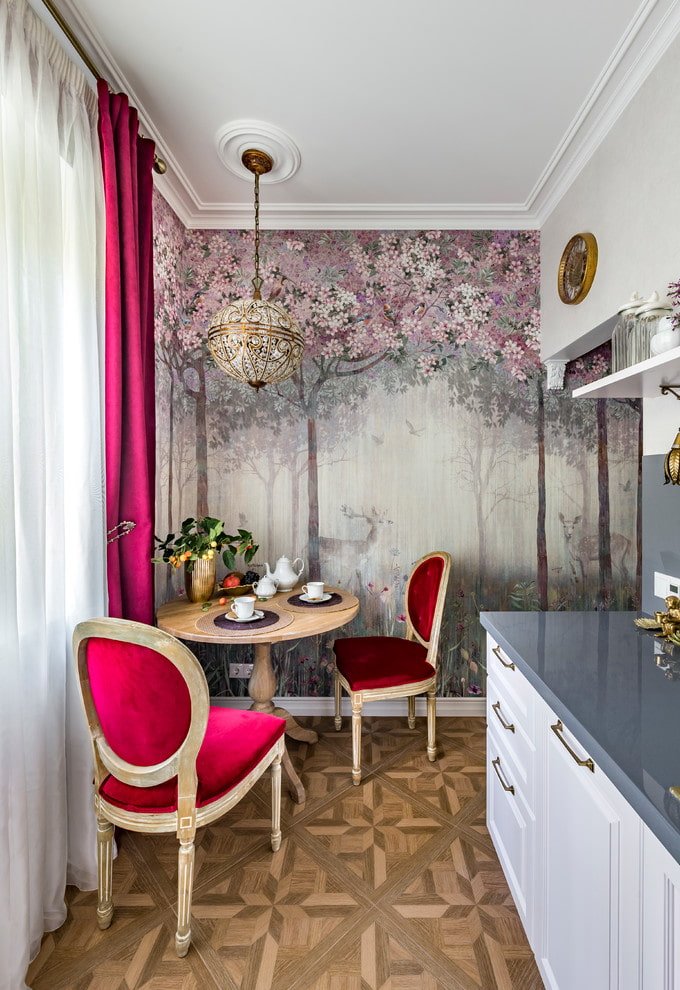
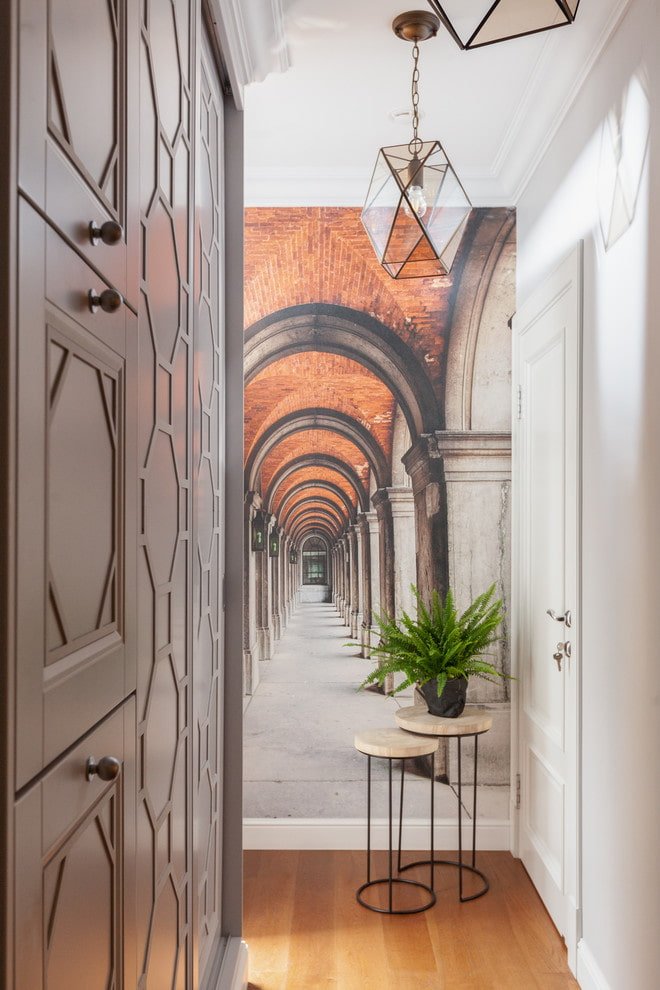
Mirror panels
With the help of mirrors, you can noticeably transform the environment, playing on reflections and the geometry of the room. Mirrors can multiply the light and add “meters” to the interior, if only optically. They are not intended for covering all walls, but are great for creating an elegant accent. A mirror wall is formed from whole panels, as well as tiles or mosaics.
To avoid turning the decor into kitsch, use matte finishes for decorating other surfaces, and support shiny reflective panels with metal and glass details.
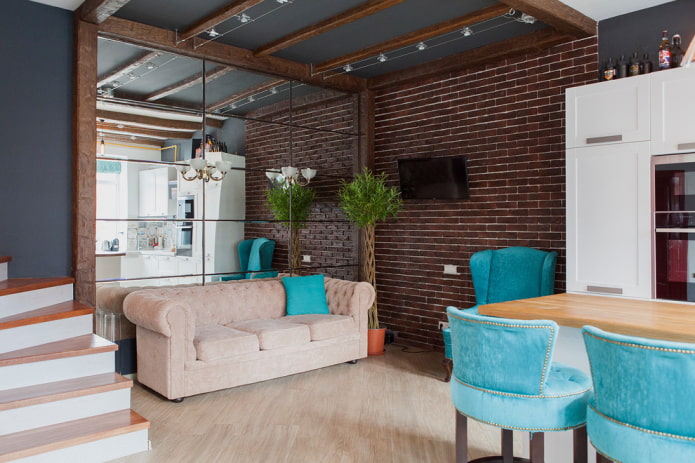
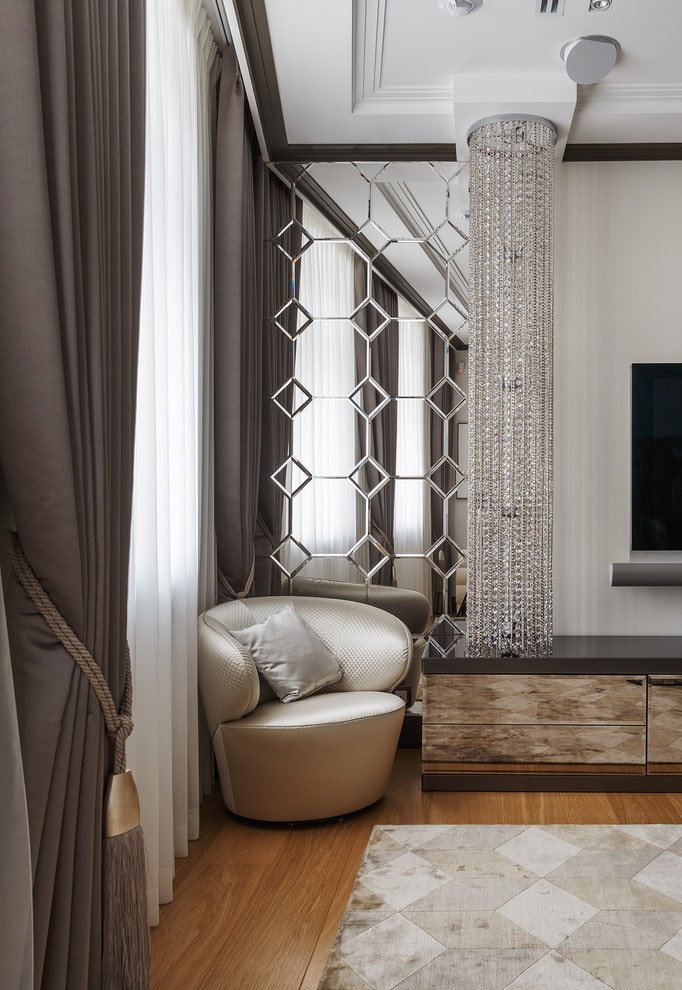
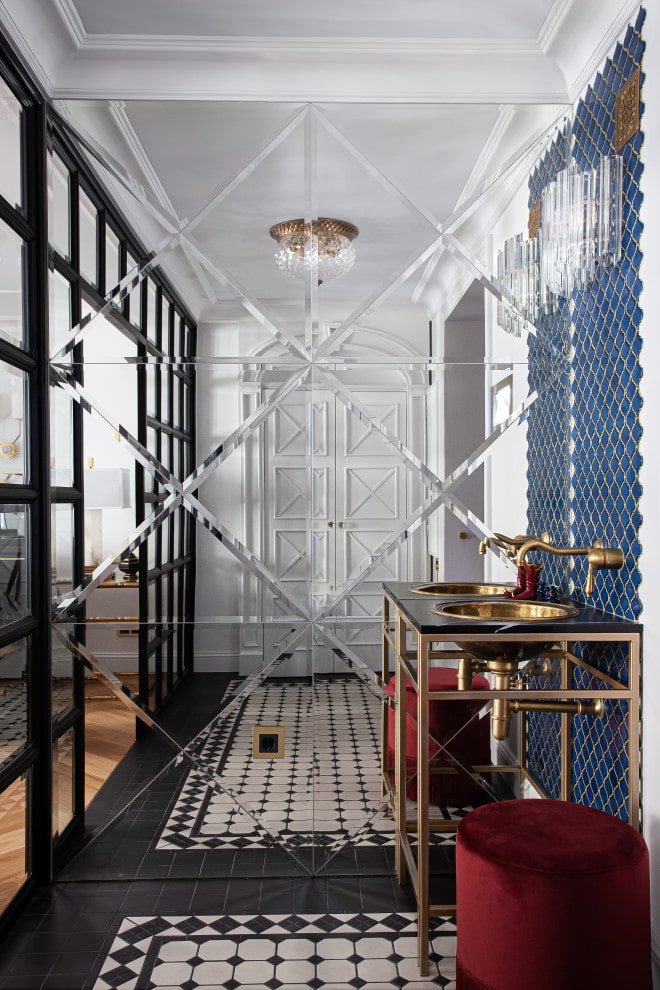
Weinskot
These are decorative wooden panels that are used to cover the walls of rooms. Initially, Europeans used them to escape the cold. Now this luxurious finish is used as a decoration, as well as additional sound insulation. The panels can fill 1/3, 2/3 of the wall or the entire surface – depending on the style of the interior and the abundance of carving. Sections can be combined, used to decorate piers, window and door openings.
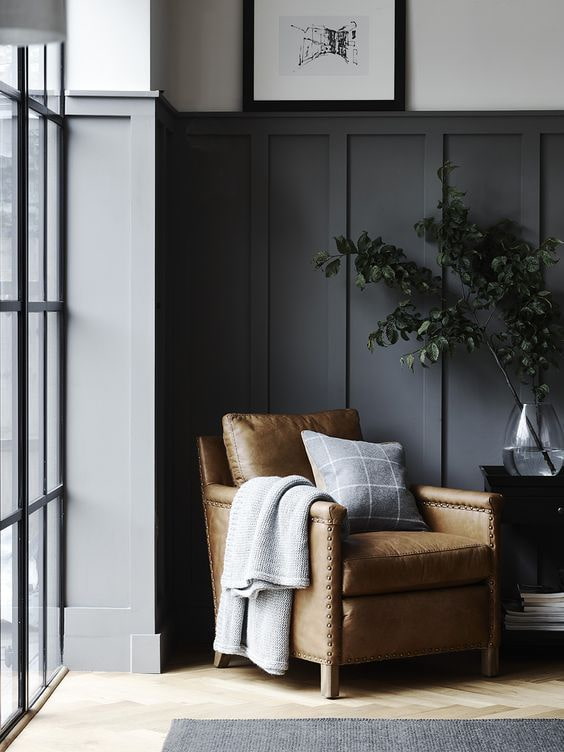
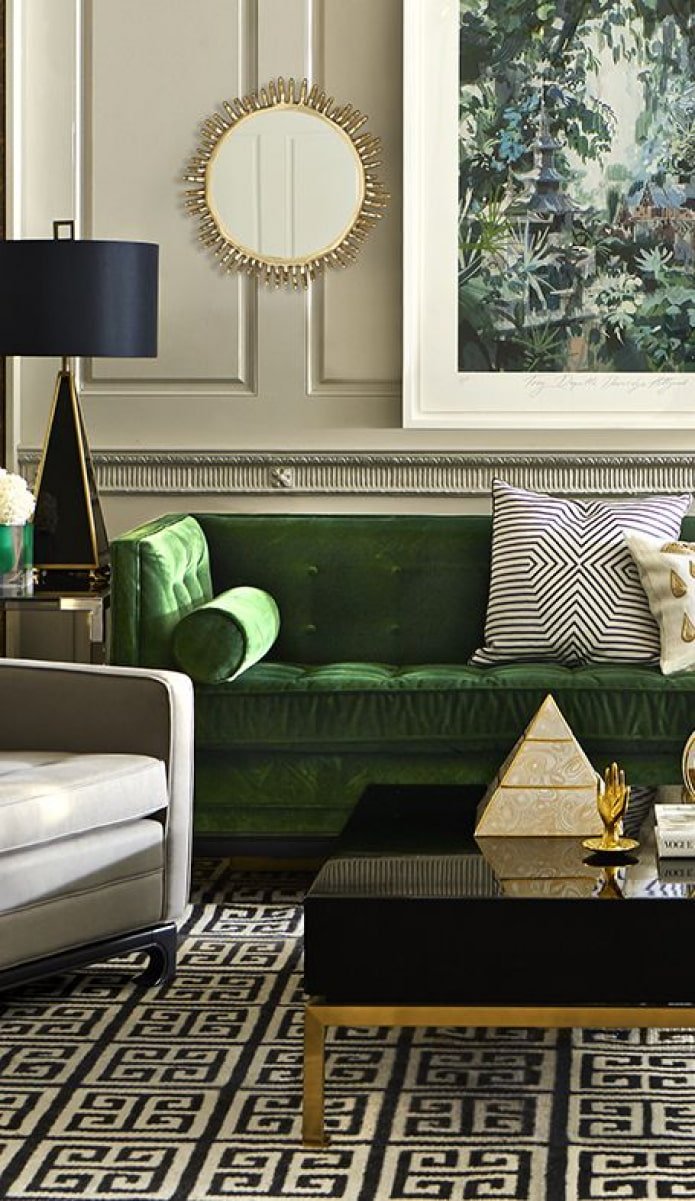
Construction materials
These budget-friendly but unusual finishing methods will be appreciated by creative people who are free from prejudice. When recreating the loft style, many designers leave the concrete wall untreated, only covering it with protective compounds.
To create an interesting texture, the surfaces are covered with OSB boards or plywood, painting or varnishing them. Another bold approach is to cover the walls with durable and environmentally friendly cork.
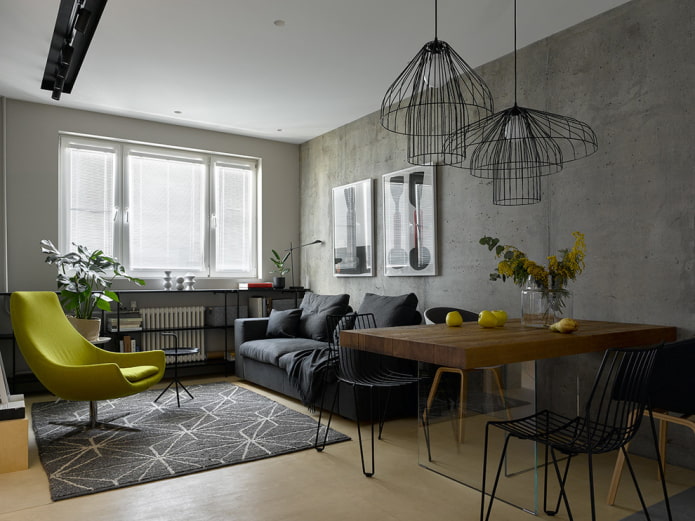
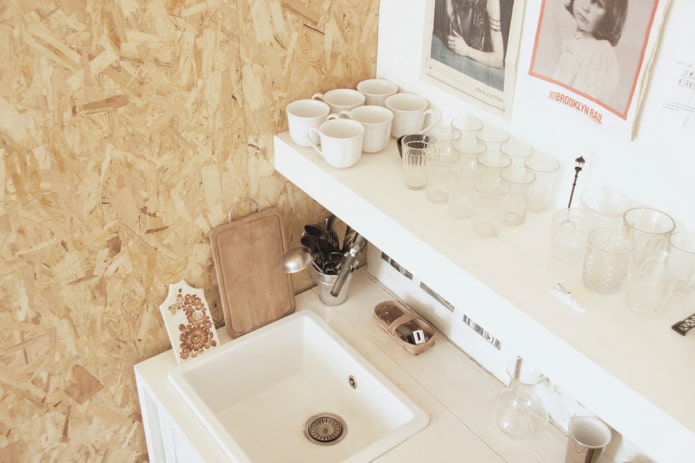
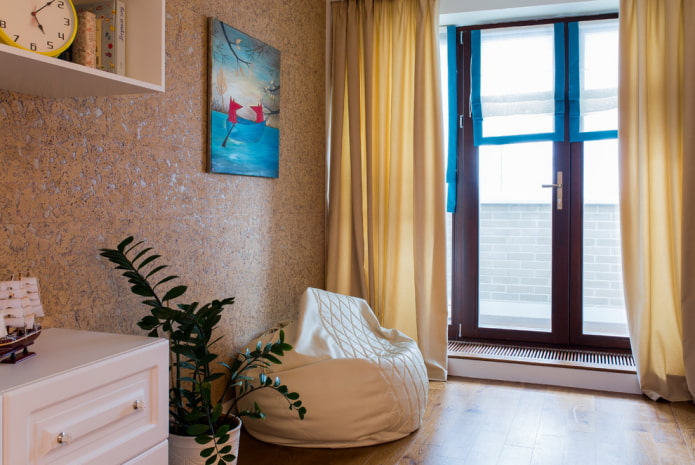
As we can see, in addition to wallpaper, there are many interesting materials for finishing walls and creating an original interior.
Now reading:
- Discover the Hyundai i30: A Compelling Drive Awaits!
- 12 Effective Ways to Create a Pleasant Smell in Your Home.
- Stylish Ways to Hang Tulle to Transform Your Interior.
- Gypsum tiles in the interior: more than 50 photos and fresh design ideas.
- Gray Walls in the Interior: 75 Unique Ideas for Decoration and Design